Predator Attacks & Poultry Wound Care Essentials
Nothing is more stressful and devastating to a backyard chicken keeper than the realization that your flock has been attacked by a predator. If you have a well stocked first aid kit containing a few poultry wound care essentials you’ll be able to offer your birds medical care quickly, setting them on the road to recovery as soon as possible.
Today I am sharing my experience with predator attacks, and how I helped support and heal chickens and ducks after an attack. No one wants injured livestock, but I’ve found it’s best to be prepared for any situation. Below you will find the types of injuries uaually assoiciated with chicken predators in Upstate New York, helpful tips on how to handle a wounded bird, and the best products to keep on hand in a chicken first aid kit.
Table of Contents
- Types of Predator Attacks and Injuries
- A Ounce of Prevention is Worth a Pound of Cure
- Poultry Triage, Injury Assessment and Evaluation
- When Treatment Isn’t The Best Option
- The Poultry ICU
- Poultry Wound Care Essentials
We’ll save illness and disease support for another day, because there’s a lot to cover when it comes to backyard poultry and waterfowl injuries.
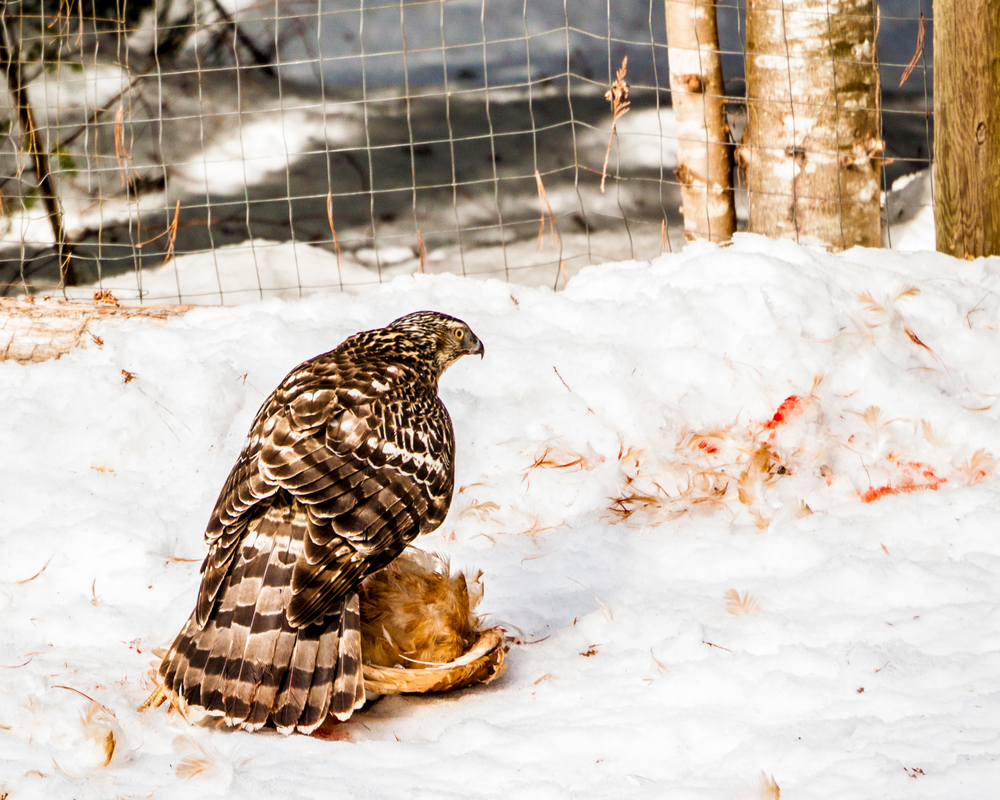
Types of Predator Attacks and Injuries
Before we get into how I treat wounded birds, and my favorite products to help clean, protect and promote healing of traumatic injuries, it’s helpful to know what kind of injuries you will typically see from different predators. This list isn’t exhaustive, just the most common predators that are a threat in Upstate New York that I’ve personally dealt with. I’ve not had issues with raccoons or skunks, which can be problematic. If you have had issues with other predators not listed here share your experience in the comments so we can all learn.
Dog Attacks, Both Wild and Domesticated
Domesticated dogs and coyotes use a bite, shake, and release kill method which rattles the internal organs causing damage and shock that forces the animal to collapse (even if the neck hasn’t been broken). Chickens are unlikely to survive a coyote attack, but domestic dogs can often be called off before lethal injuries have occured. Aside from bite wounds birds will often have internal injuries that may not be immediately obvious.
Fox Attacks
Fox are most concerned with getting their prey to a location where they feel comfortable rather than instantly killing it. They are very careful and clever to avoid other predators that are also hunting. This makes their approach different from their other canid relatives such as wild and domestic dogs who bite and shake their prey in their mouths as soon as they have a hold on it. If a fox attack is interrupted the chicken has a higher chance of survival compared to other predator attacks who inflict internal injuries from shaking, along with piercing and crushing wounds from bites such as coyotes and dogs. Fox are such cunning hunters the only time I’ve had survivors was when my dog heard my birds in distress and chased the fox until it dropped my bird it had in its mouth.
Mink, Weasel & Fisher Attacks
Mink, fisher, and weasel attacks are absolutely devastating. These members of the weasel family will attempt to kill an entire flock. Unlike other predators we’ve talked about here, mink don’t “eat” chickens, they only want to drink the blood of their prey. Mink are extremely fast, and when they attack they go directly for the chickens necks. Morgan at Cold Shaw Farm has a Youtube video of the aftermath of a weasel attack on his duck farm. The video is incredibly real and raw and will have you wanting to install hardware cloth fencing ASAP.
Hawks
In my experience the survivability of a hawk attack is a mixed bag and probably dependent on many factors. Hawks usually use their feet and talons as their primary weapon when attacking prey. Hawks typically stalk their prey from a perch, watching and waiting for the perfect moment to strike. At the moment of attack, as a hawk is swooping down toward its prey they swing their legs forward and aim their muscular feet and sharp talons towards it’s intended prey. Injuries from hawks usually include deep ragged gouges along the back of the chicken’s body and head.
Snapping Turtles
If you keep waterfowl and have a natural water source, snapping turtle attacks can be a very real threat to you ducks and ducklings. Snapping turtle bites can be very nasty, they will lie still in water and wait for an unsuspecting critter to swim by — ideally a fish, but if the opportunity presents itself they will go after larger prey. If it is something that a turtle can eat like a small duckling, it will probably end up being the turtle’s next meal, if it’s too large the turtle may release the duck. Snapping turtles have a very strong bite and powerful jaws that are designed to cut, not crush, so you will likely be dealing with deep lacerations. When my buff duck was attacked by a snapping turtle she had a bite wound near her leg, and also a bite on her face that cracked her bill. When I was researching treatments for my duck I learned that snapping turtles are known for attacking ducks faces and heads, which I found surprising.
A Ounce of Prevention is Worth a Pound of Cure
I am not here to lecture you on coop and run security, that’s not helpful when you are feeling lousy about your flock being attacked, and are concerned with helping your birds heal and recover. But once your flock has been attacked that predator now has the experience of hunting backyard poultry, and it will likely be back, sooner than later.
A secure chicken run will offer protection against predator attacks, and should include a physical barrier such as a fence at least 5-6 feet high, and a 12” trench all the way around the perimeter of the chicken coop and run with buried wire mesh hardware cloth to prevent animals like fox from digging under. An alternative to a trench is to extend a 12” apron out from the perimeter. An apron isn’t as effective as a trench, but will provide some measure of security from digging predators.
I am currently using an Electric Poultry Netting kit from Premier 1 Supplies. An electric chicken fence will keep land predators away by delivering a small shock when they come into contact with it, they will associate hunting in the area, and your chickens with an unpleasant sensation making what may have been considered an easy hunting spot undesirable. Solar powered electric poultry fencing is easy to set up and use. I will not lie, it is an investment, but with the astronomically high price of lumber right now I was able to create a larger secure pasture area for my flock without the addition of permanent costly infrastructure. My nuisance wildlife control expert friend reminded me that my electric poultry netting is unlikely to prevent weasel attacks, but my coop is secure and the biggest source of predator pressure I face is from foxes.
Poultry Triage, Injury Assessment and Evaluation
As soon as you are aware of a predator attack your first step in treating your injured bird is to actually evaluate the wounds, and if you have more than one bird who has been injured you will need to prioritize who needs treatment first. Injured birds are often in a state of shock and panic. To prevent the bird from further injuring itself, use an old towel to wrap the chicken up. The towel helps calm and restrain the bird during transport to a safe location away from other flock members.
Even in a well lit area, feathers can hide a lot. I highly recommend using a led headlamp or flashlight to help you clearly check out injuries. If the bird is actively bleeding, use firm pressure on the site until the bleeding stops. If the bleeding isn’t that bad use saline to flush out the wounds, and treat with Poultry Wound Care Spray to promote healing and prevent infection.
When Treatment Isn’t The Best Option
There is the unfortunate possibility that your chicken has survived a predator attack but sustained enough injuries or trauma that the humane thing to do is simply put them out of their suffering, which 100% is easier to say than do. As hard as this is, it is the last kindness we can show our feathered friends.
I can’t tell you when is the right time to euthanize an injured bird. It’s up to you to use your best judgement to determine when to humanely euthanize a bird, and to do so as quickly and efficiently as possible. Some considerations you need to take into account are how extensive the injuries are, and are they causing the bird visible suffering, pain and/or left them unable to eat and drink, or if treatment will just prolong the inevitable, and possibly cause a bird more suffering and pain than necessary.
Because this post is focused on healing and treatment we aren’t going to go into the details of dispatching an injured bird today, but if you find yourself in a situation requiring action immediately, euthanizing poultry by decapitation, blunt force trauma, and manual and mechanical cervical dislocation are all considered humane. It is fairly easy to find tutorials for each method online.
The Poultry ICU
Depending on the severity of your bird’s injuries you may want to give her a quiet place to recover, away from the rest of the flock. I use my brooder on my porch to house recovering birds temporarily, this allows me to keep an eye on the recovering bird, assess how much they are eating and drinking, and provide care, and I don’t have to worry about flock members pecking at wounds. Your birds recovery area should have enough room for her to move around and preen herself, you should also have fresh water and food available for her.
If you have to move a duck away from the rest of her flock to recover, set up a mirror where she can see herself so she doesn’t get lonely.
Poultry Wound Care Essentials
Poultry Wound Care Essentials
Keep these items on hand for emergency wound care. Each item has been linked to Amazon (affiliate link) so you can purchase online, or use as a reference. If you don't have these items on hand and find yourself in a situation where your need to treat trauma, your local farm supply store and drugstore should have most of these items.
Vetericyn
Vetericyn Plus Poultry Spray is a topical application for treating chickens with wounds, cuts, pecking sores, vent prolapse, frostbite, bumble foot, scratches, and more. Vetericyn Plus is safe, non-toxic, and free of antibiotics. Contains no alcohol, antibiotics or steroids. Safe for chickens at all life stages, with no egg withholding if used on layers.
Nutri-Drench Poultry Solution
Nutri-Drench Poultry Supplement provides a premium nutrient-rich liquid supplement, that I use to offer additional nutritional support to chickens that are recovering from injuries. This chicken supplement enter the bloodstream in minutes for fast, effective use. The molasses-based poultry supplements help promote good health and contains the following vitamins and minerals:
- Lysine, Methionine, Calcium, Vitamin A, Vitamin D-3 & Vitamin E
Wound Care Kit
Rounding up all the different size and types of bandages can be expensive, add this starter pack of bandages that are useful for cleaning, covering and protecting injuries to your first aid kit to have a assortment of frequently used pads, wraps and guaze.
10 gauze pads
10 antiseptic wipes
12 non-stick pads
4 transparent dressings
3 rolled gauze
1 paper tape
Vet Wrap
Use a self-adhering bandage to hold dressings in place. Vet wrap style bandages will stick to itself but not to feathers so there’s no damage when you remove it.
Dog Nail Clippers
For trimming nails, beaks, or spurs that have become cracked or damaged during an attack.
Saline Solution
Saline Solution is great for washing out eye injuries or flushing out wounds. Saline, also called saline solution is sterile salt water and will not be harmful to healthy tissue sorrounding the injury. It helps to remove dirt and debris without interfering with the normal healing process.
Irrigation Syringe
Wound irrigation is an important aspect of wound treatment, which helps decrease bacterial contamination. Use basic syringes to flush wounds with a saline solution. These are also handy for dispensing medication.
Chicken Saddle
Use a chicken saddle to keep healing wounds from hawk attacks covered and prevent reopening of punctures or lacerations by curious flock members who may peck at wounds.
Super Glue
If your bird's beak gets broken, and the part did not fall off all the way and it can be repaired with super glue. Use a thin piece of paper (like a coffee filter or tea bag) or very thin fabric to create a "casting" to support the two pieces together, held together with super glue.
Aspirin 325mg
Use asprin to help with pain management. Crush 4 regular strength, non coated aspirin into one gallon of water to help with pain. Remember whenever you are offering water with additives to also have plain water available.
This seems like a lot, but many of the items you probably already have or are easy to get. You don’t need to get everything on the list all at once. If I had to pick only one thing from this list to keep on hand I would go with Vetericyn, it’s incredibly useful, I’ve even used it on a paw injury on my dog.
Let’s hope you never have to deal with any of the situations I outlined or use any of these items! But since avian vets are few and far between, it’s good to be prepared, just in case.


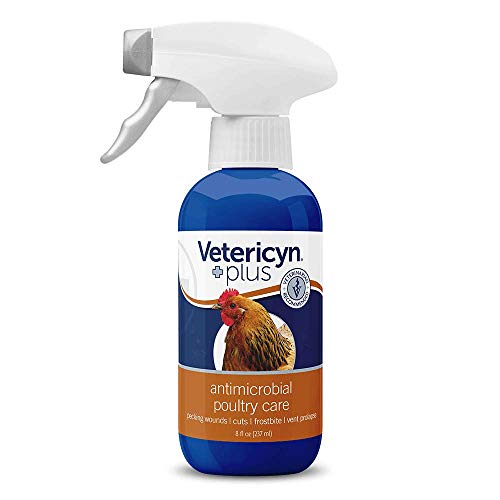

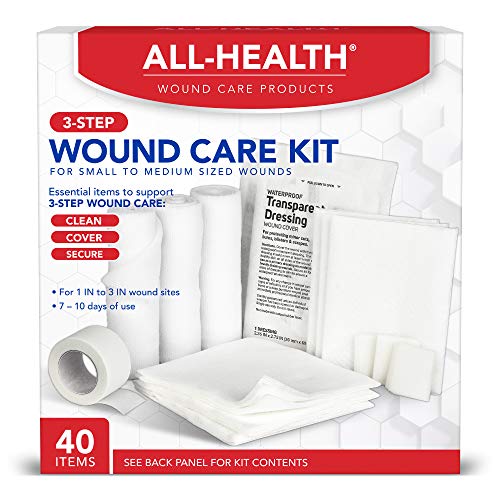
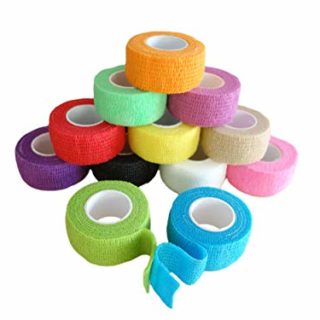
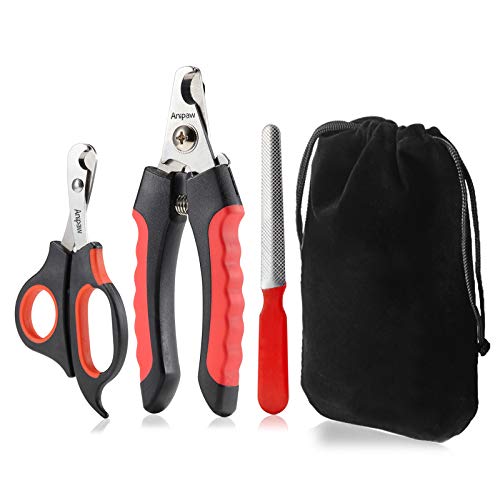
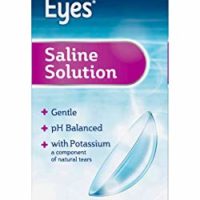
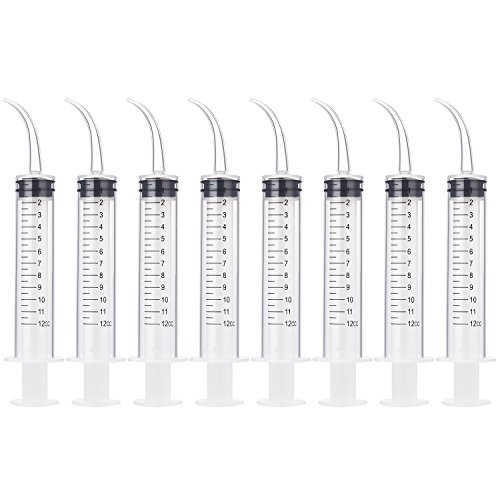
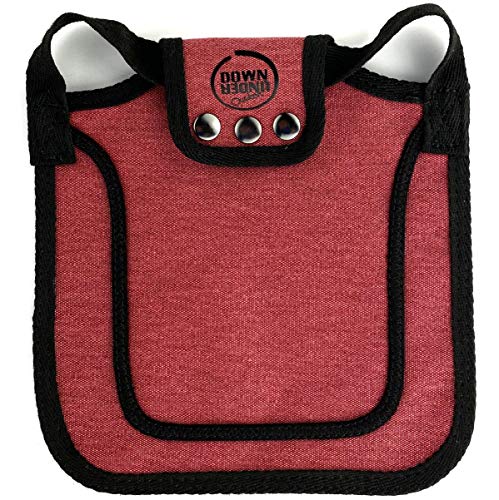

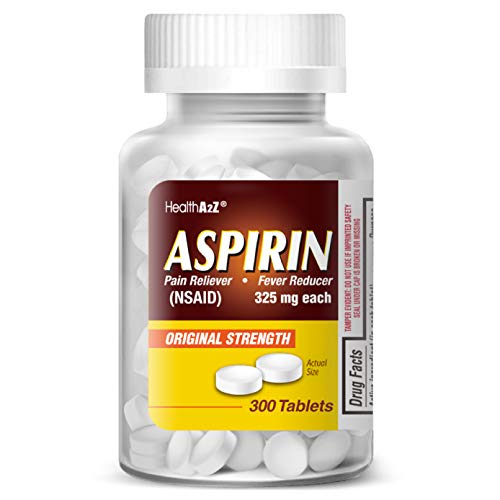

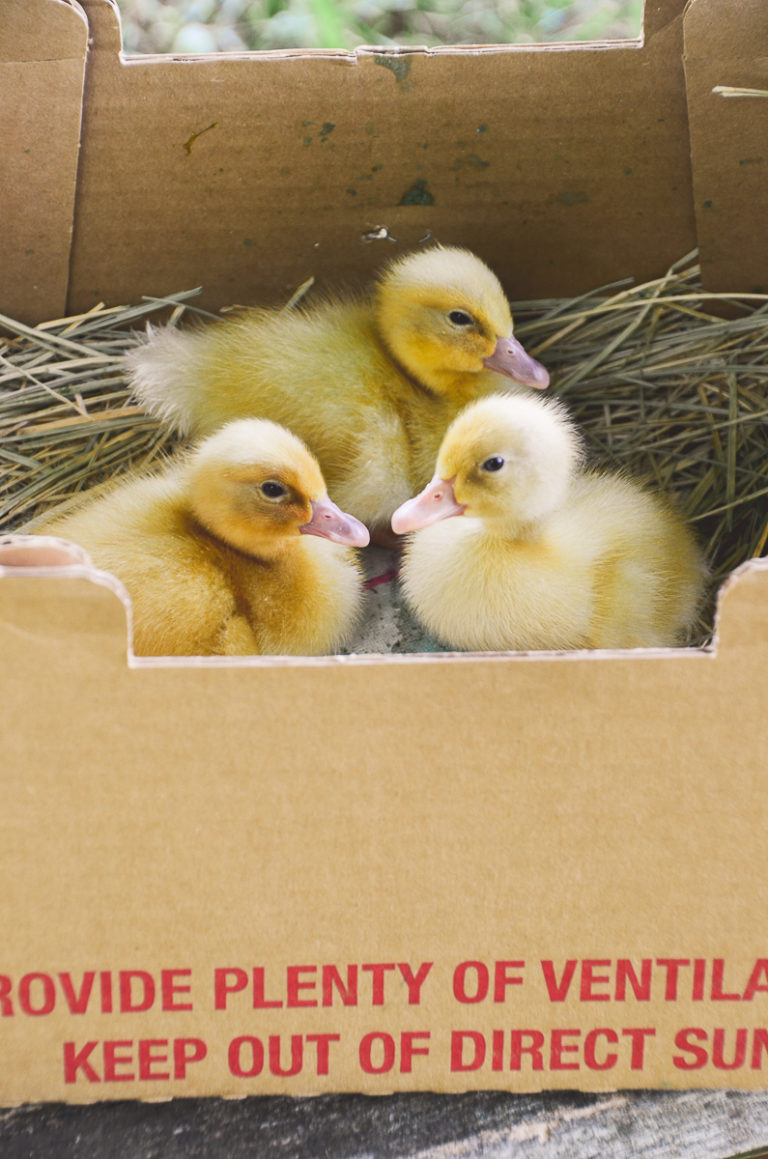
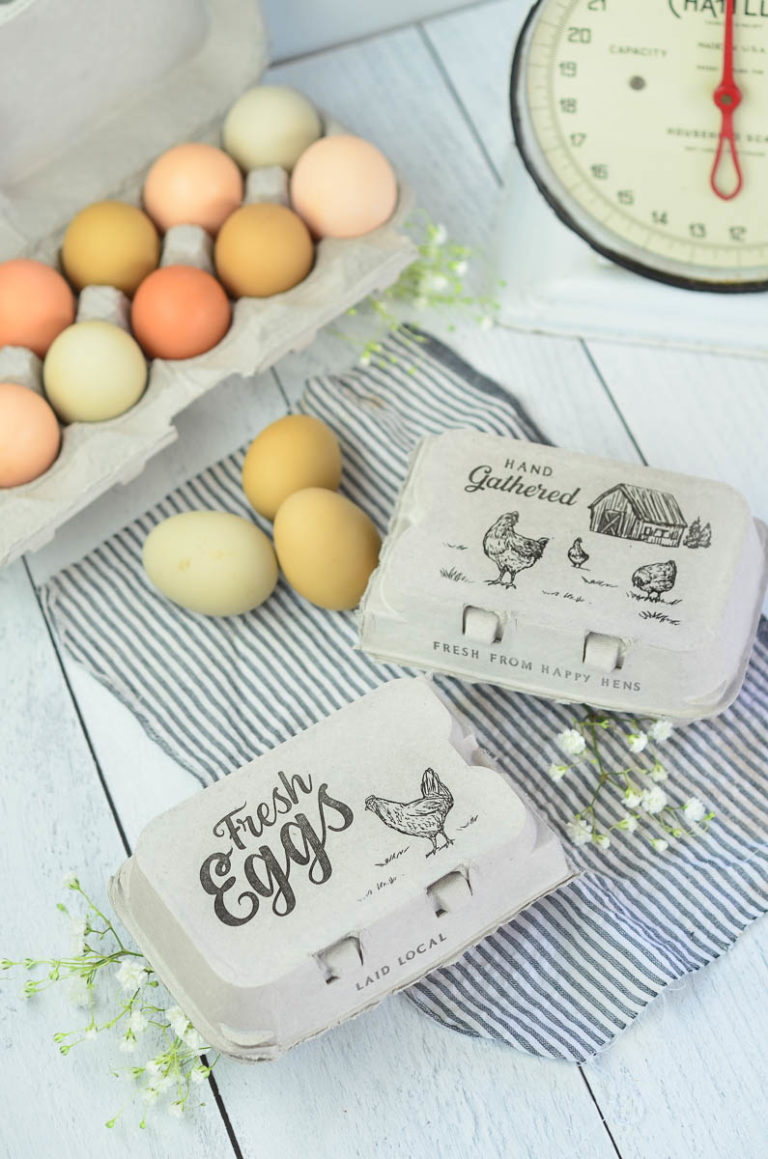
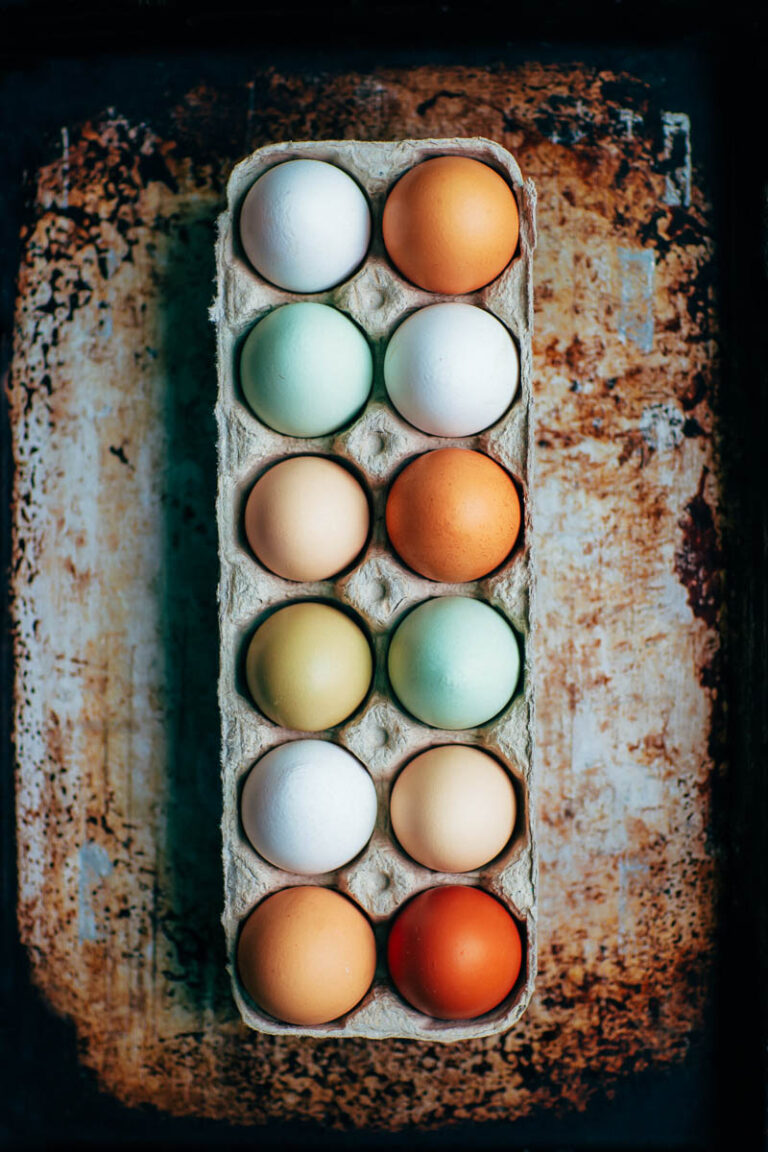
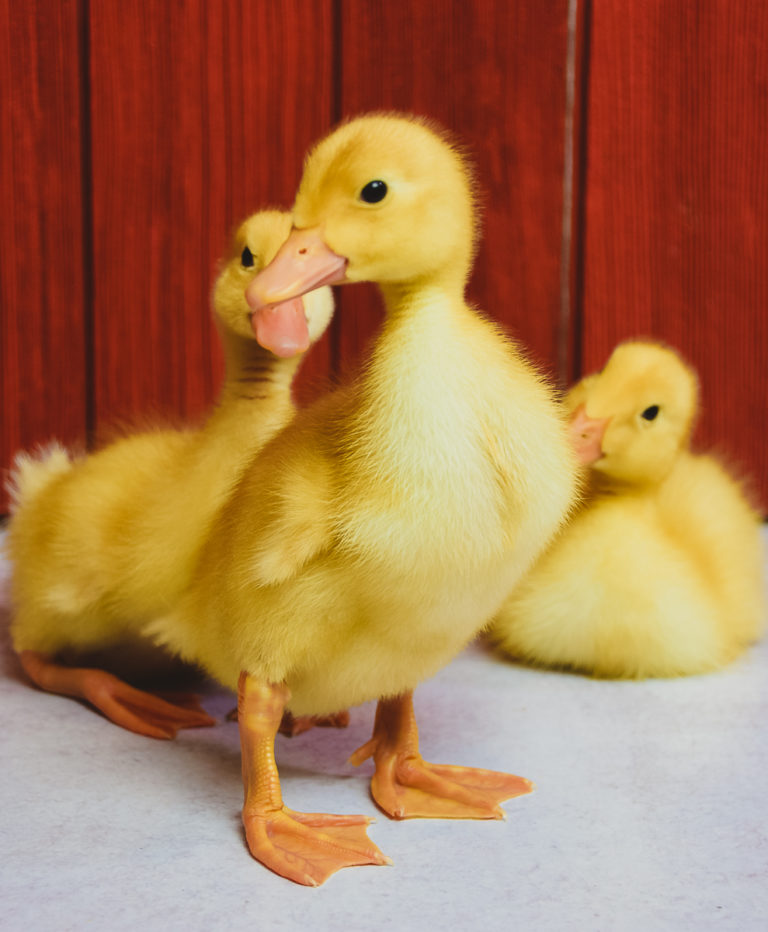

This is so very helpful! Thank you!! This year alone we have already had to deal with 2 separate fox attacks. Both with gunieas. The fox made off with one and the other sustained injuries. I am picking up Vetricyn today. I have been a chicken momma for years and this is the first time I have had to deal with predators. But it is because I free range my flock so I’m thinking this fox has been watching for awhile. Gonna really have to talk my hubby into getting a Great Pyrenees. We plan on adding more chickens, goats and a donkey to our little funny farm 🙂